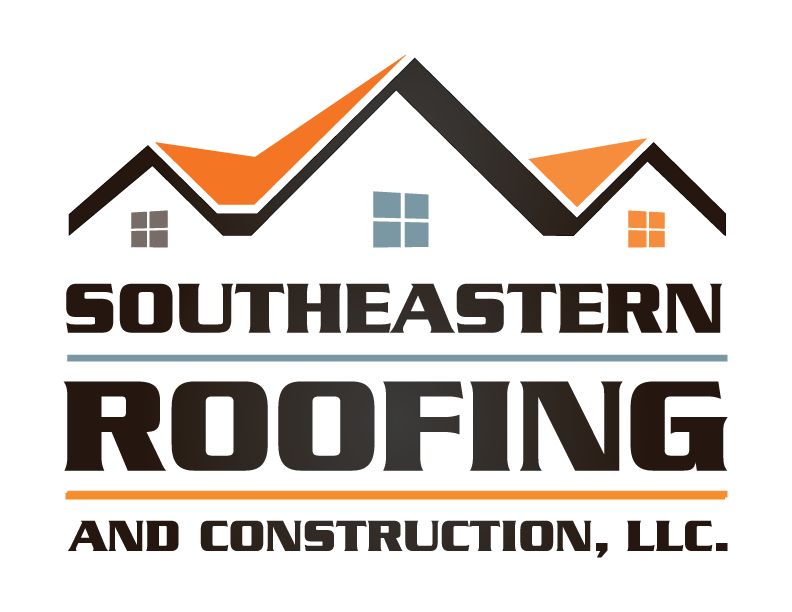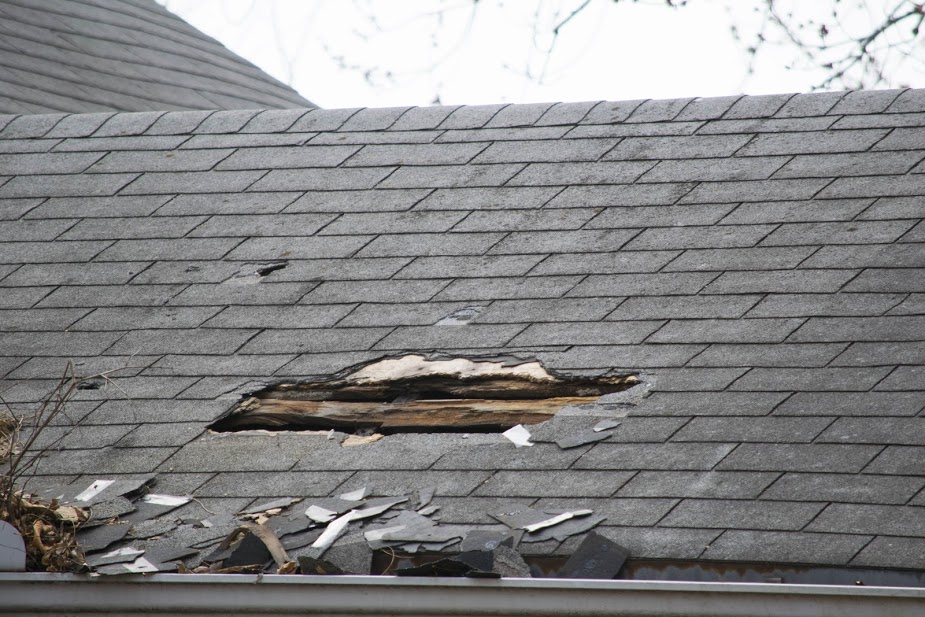Have you ever heard the saying, ‘A stitch in time saves nine’?
Well, when it comes to your roof, this old adage couldn’t be more true.
We, the experts in roof maintenance, are here to shed light on why your roof shows those pesky damage signs.
From missing shingles to sagging surfaces, we’ll uncover the secrets behind these warning signals.
So, join us on this journey as we explore the reasons behind your roof’s distress, and discover how you can ensure a safe and secure home.
Key Takeaways
- Missing, cracked, or curled shingles compromise roof integrity and should be addressed promptly.
- Leaks or water stains on ceilings indicate roof problems and should not be ignored.
- Damaged or clogged gutters increase the risk of water damage and should be regularly maintained.
- Clean and functional gutters are crucial in preventing foundation erosion and should be inspected and repaired as needed.
Missing, Cracked, or Curled Shingles
When inspecting our roof for damage signs, one of the common issues we may come across is missing, cracked, or curled shingles. These issues can compromise the integrity of our roof and lead to further damage if left unattended.
It’s crucial to address these problems promptly to maintain the longevity and functionality of our roof. Roof maintenance plays a vital role in preventing shingle damage. Regular inspections and timely repairs are key to avoiding costly issues down the line.
When it comes to roof repair options, there are several effective solutions available. Replacing the damaged shingles, sealing any cracks, or using specialized adhesives to reattach curled shingles are all viable choices.
Leaks or Water Stains on Ceilings
To continue our discussion on roof damage signs, one common issue that can indicate a problem is the presence of leaks or water stains on our ceilings. When we notice these signs, it’s crucial to take immediate action.
Leaks or water stains on our ceilings are clear indicators that there’s a problem with our roof. Ignoring these signs can lead to more extensive damage and costly repairs.
It’s essential to prioritize roof maintenance and schedule regular professional inspections to detect any potential issues early on. A professional inspection can help identify the source of the leak or water damage and determine the best course of action to address the problem.
Damaged or Clogged Gutters
Damaged or clogged gutters can lead to various issues for your roof. Firstly, they increase the risk of water damage as rainwater can’t properly drain away from your home. This can result in leaks, mold growth, and structural damage.
Additionally, when gutters aren’t functioning properly, water can overflow and pool around the foundation, leading to erosion and potential foundation problems.
Lastly, neglecting to address damaged or clogged gutters can shorten the lifespan of your roof as the excess water can cause degradation and deterioration over time.
Water Damage Risk
Our roof often shows signs of water damage due to the presence of damaged or clogged gutters. Proper maintenance of gutters is crucial to prevent water from seeping into our homes and causing damage. Regular risk assessment is necessary to identify any issues with the gutters and take appropriate action.
To mitigate the risk of water damage, it’s important to clean the gutters regularly and ensure they’re free from debris and blockages. Additionally, inspecting the gutters for any signs of damage such as cracks or leaks is essential. By addressing gutter issues promptly and maintaining them properly, we can prevent water from overflowing or pooling on our roofs, minimizing the risk of water damage.
Now, let’s explore another important aspect of roof maintenance: foundation erosion prevention.
Foundation Erosion Prevention
Maintaining clean and functional gutters is essential for preventing foundation erosion caused by water overflow. When gutters are damaged or clogged, water can accumulate around the foundation of your home, leading to erosion and potential structural issues.
To prevent this, regular gutter maintenance is crucial. Clearing debris such as leaves, branches, and dirt from your gutters will ensure that water can flow freely and be directed away from your foundation. Additionally, installing gutter guards can help prevent clogs and reduce the need for frequent cleaning.
It’s also important to inspect your gutters for any signs of damage, such as cracks or leaks, and repair them promptly. By implementing these erosion control techniques and prioritizing foundation maintenance, you can protect your home’s structural integrity and avoid costly repairs in the future.
Roof Lifespan Reduction
Clogged or damaged gutters can significantly reduce the lifespan of your roof. Proper roof maintenance is crucial to ensure its longevity and protect it from weather damage. When gutters become clogged with leaves, debris, or even ice, water can’t flow freely, causing it to accumulate on the roof. This excess water can seep into the roof’s structure, leading to rot, mold, and other forms of water damage.
Additionally, clogged gutters can create pools of water that can weigh down on the roof, causing it to sag or become uneven. Regularly inspecting and cleaning your gutters is essential to prevent these issues and maintain the integrity of your roof. Neglecting gutter maintenance may result in costly roof repairs or even premature replacement.
Now, let’s move on to discussing the next topic: sagging or uneven roof surface.
Sagging or Uneven Roof Surface
We’ve noticed that a sagging or uneven roof surface is one of the most common signs of roof damage. When your roof starts to sag or becomes uneven, it can indicate underlying structural damage that needs immediate attention. This issue shouldn’t be ignored, as it can lead to more severe problems if not addressed promptly.
A sagging roof may be caused by various factors, such as weakened or damaged support beams, excessive weight on the roof, or water damage. It’s crucial to have a professional roof repair service assess the situation and determine the extent of the damage. They’ll be able to provide the necessary repairs to restore the structural integrity of your roof and ensure the safety of your home.
Excessive Granule Loss From Shingles
Excessive granule loss from shingles is a common issue that homeowners may face. This can be caused by various factors such as age, weather conditions, or poor installation.
It’s important to address this problem promptly as excessive granule loss can significantly shorten the lifespan of your roof and leave it vulnerable to further damage.
Causes of Granule Loss
How can frequent storms impact the lifespan of our shingles?
One of the main causes of granule loss from shingles is the harsh weather conditions that occur during storms. The intense winds, heavy rain, and hail can cause premature aging of the shingles, leading to the loss of granules.
When these granules are washed away, the shingles become more vulnerable to further damage and deterioration. Additionally, the constant exposure to extreme weather conditions weakens the adhesive that holds the granules in place, making it easier for them to detach.
This excessive granule loss not only affects the appearance of the roof but also reduces its ability to protect our homes from the elements. Understanding the causes of granule loss is crucial in assessing the impact on the lifespan of our roofs.
### Impact on Roof Lifespan
The impact on the lifespan of our roof due to excessive granule loss from shingles can be significant. When shingles lose their granules, it exposes the underlying asphalt to the harsh elements, leading to accelerated deterioration. This can result in leaks, water damage, and structural issues, ultimately shortening the lifespan of the roof.
Additionally, the loss of granules can have a negative impact on the aesthetics of the roof, making it appear worn and aged. This can affect the overall curb appeal of the property, potentially lowering its value.
Therefore, it’s crucial to address granule loss promptly and consider necessary repairs or replacement to maintain the longevity of the roof and preserve its visual appeal, ultimately protecting the value of the property.
Signs of Mold or Mildew Growth
We often notice the presence of mold or mildew on our roof. Mold and mildew thrive in moist environments, making our roofs vulnerable to their growth.
Identifying the signs of mold or mildew growth is crucial for both the health of our roof and our own well-being. Dark stains or discoloration on the roof surface, a musty odor in the attic, or water stains on the ceiling are all indicators of mold or mildew presence. Ignoring these signs can lead to further damage and health risks.
Mold growth prevention is essential to maintain a healthy roof and prevent potential health issues. Regular roof inspections, proper ventilation, and timely repairs can help prevent mold or mildew growth and protect our homes.
## Sunken or Depressions on the Roof Surface
Noticing sunken or depressions on the roof surface is a clear indication of potential damage. These depressions, also known as roof sagging, can occur due to various reasons such as water pooling, structural issues, or inadequate support. It’s important to address these issues promptly to prevent further damage and avoid costly roof repairs in the future.
To repair a sunken roof, it’s crucial to identify the underlying cause. If the sagging is due to water pooling, improving drainage systems or repairing leaks can help alleviate the problem. Structural issues may require professional expertise to reinforce or replace damaged beams or trusses. Regular roof maintenance can also prevent sagging by ensuring proper support and addressing minor issues before they escalate.
Conclusion
In conclusion, it’s crucial to regularly inspect your roof for signs of damage.
Missing, cracked, or curled shingles, leaks or water stains on ceilings, damaged or clogged gutters, sagging or uneven roof surfaces, excessive granule loss from shingles, and signs of mold or mildew growth are all red flags.
Take action promptly to prevent further deterioration. Remember, a well-maintained roof reduces the risk of costly repairs.
Stay vigilant and safeguard your shelter from silent threats!

